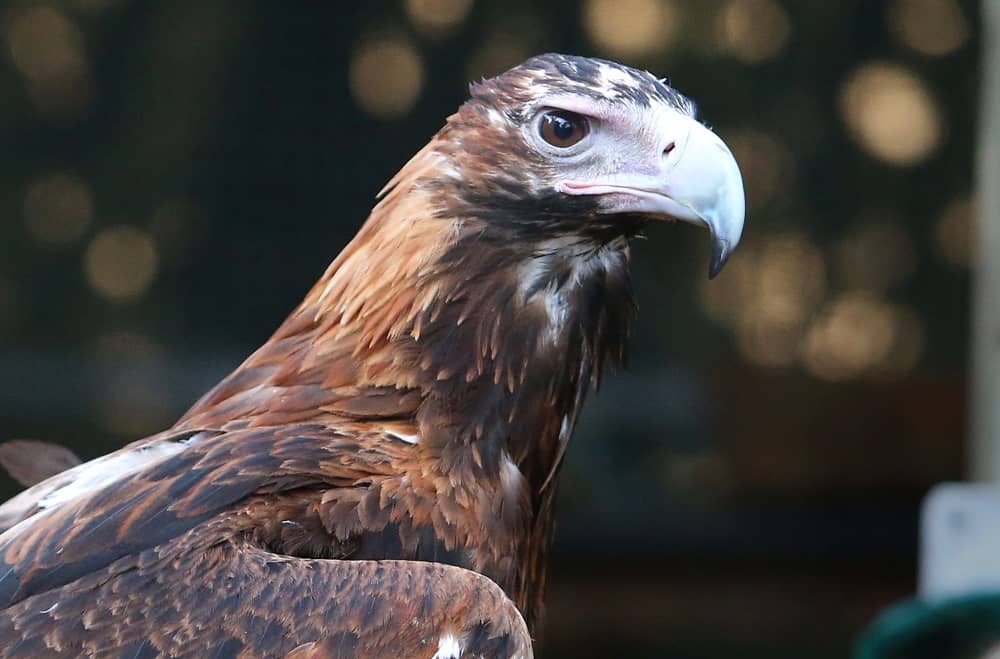The eagle has landed on her feet after being shot out of the sky near Gympie in 2017.
After surgery, hopes that the eagle may be released into the wild were dashed.
She has arrived at the Ipswich Nature Centre but will not be going on display just yet.
Mirrigin is a wedge-tailed eagle, Australia’s largest raptor and one of the largest eagles in the world.
Mirrigin’s journey to the Ipswich Nature Centre has been a long one.
Mirrigin had significant damage to her left wing so she received surgery from a bird medicine specialist Associate Professor Bob Doneley.
“We’ve put four pins in its wing, and an external skeletal fixator bar,” he said.
“During surgery we found no signs of infection, but a lot of dead tissue had to be removed from the fracture site.”
Photo courtesy of UQ.
“She is quite large with a wing span of just over two metres. It took two keepers to transport her, she required a large modified travel box and a van to get here,” she said.
“Mirrigin has adjusted well to her new home. She is fed a daily diet of whole foods such as feeder quail, rabbit and chicken but I’d have to say her favourite food is rats.
“She gets excited and vocalises when she sees her food coming and comes over to her feeding platform when it is being put out.
“Her enclosure requires cleaning daily as she is a bit of a messy eater.”
“Handlers give her the opportunity to have a shower under the hose each day and she enjoys preening herself during this time,” she said.
When she arrived, Ipswich Nature Centre staff were charged with finding her a suitable name.
Council sought assistance from the Queensland State Library Indigenous Language coordinator for a suitable name in Yagara Language – the traditional language spoken in the Ipswich Region. Mirrigin was one of the suggestions provided – it is the traditional word for ‘star’ in Yagara Language. It is pronounced Meer-ee-gin.
She is currently housed in an off-display enclosure. Construction of her on-display enclosure is currently in the planning phase.
Ipswich First will keep you informed about when you will be able to see Mirrigin on display as that information comes to hand.
Fact File
Common Name: Wedge-tailed Eagle
Wingspan: 2.3metres
Identification: A characteristic long, wedge-shaped tail, and legs that are feathered all the way to the base of the toes
Weight: Females (4.2 kg – 5.3 kg) are larger and heavier than males (3.2 kg up to 4.0 kg)
Size: 87cm – 105cm
Distribution: The Wedge-tailed Eagle is found throughout mainland Australia, Tasmania and southern New Guinea.

